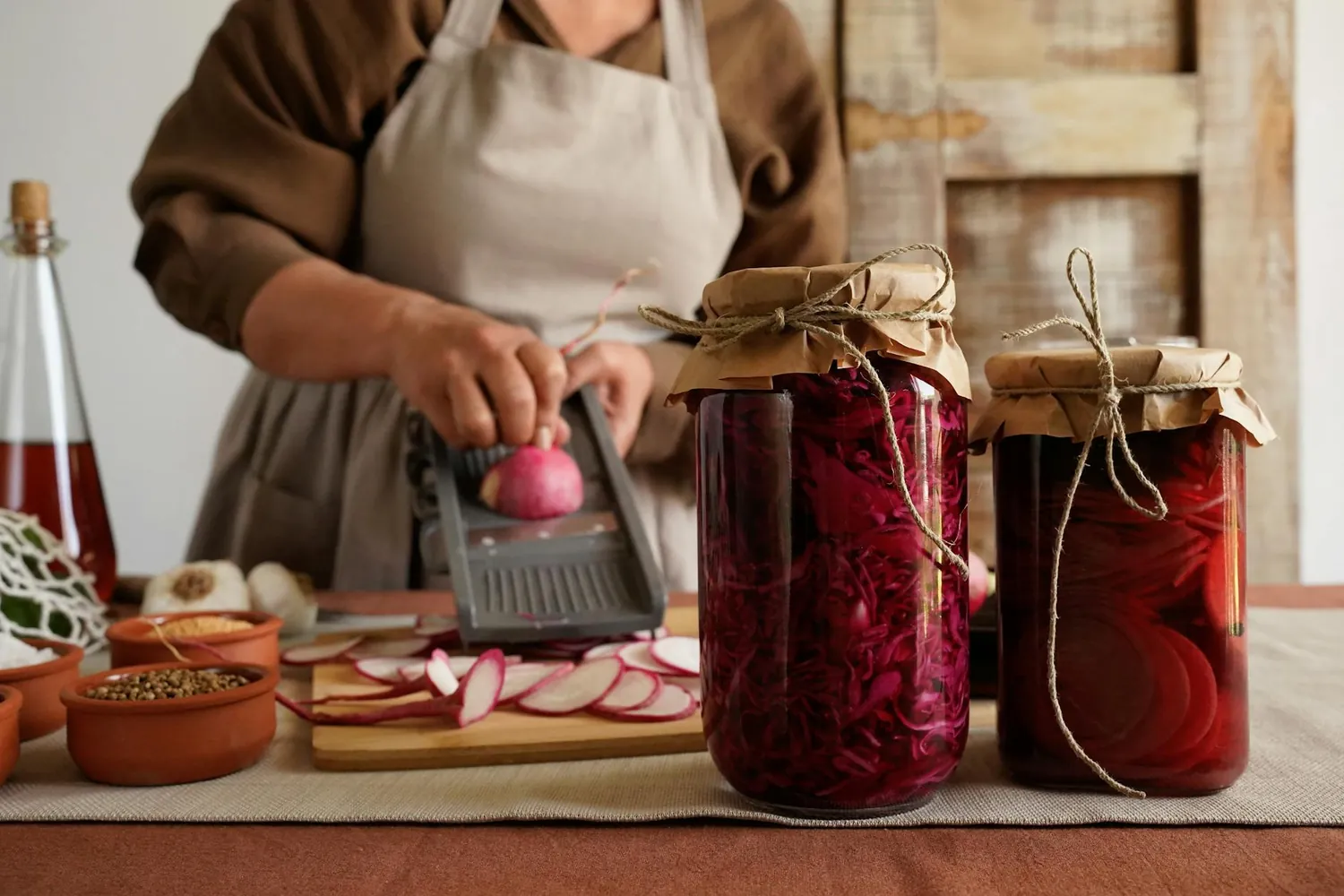Kimchi Preparation Techniques Explored: From Time-Intensive Fermentation to Quick Preservation

The Traditional Art of Fermenting Kimchi
Kimchi, a staple in Korean cuisine, is beloved for its bold flavors and health benefits. The traditional method of making kimchi involves a fermentation process that can take several weeks. This age-old technique not only develops the complex flavors but also enhances the nutritional value of the dish.

Fermentation Process
Traditional kimchi begins with napa cabbage, which is salted to draw out moisture. This salting process lasts several hours, allowing the cabbage to soften. After rinsing the cabbage, it is mixed with a paste made from garlic, ginger, Korean chili powder (gochugaru), fish sauce, and other seasonings. Some recipes also include radishes, green onions, and seafood.
The seasoned vegetables are then packed tightly into jars or traditional onggi (earthenware pots) and left to ferment at room temperature for one to two days before being moved to a cooler location. During this time, lactic acid bacteria begin to thrive, transforming sugars into acids that give kimchi its characteristic tangy flavor.
Flavor Profile and Nutritional Benefits
The slow fermentation process allows for a more nuanced flavor profile. The longer the fermentation, the more intense the sourness and umami flavors become. From a nutritional perspective, fermented kimchi is rich in probiotics, vitamins A and C, and antioxidants. These contribute to improved digestion and immune function.
- Pro: Rich in probiotics and complex flavors.
- Con: Requires patience and space for storage.
Quick-Pickling Kimchi: A Modern Twist
For those who crave the taste of kimchi but lack the time or resources for traditional fermentation, quick-pickling offers an efficient alternative. This method drastically reduces the preparation time while still delivering flavorful results.
Quick-Pickling Process
Quick-pickling follows many of the same initial steps as traditional fermentation: salting the cabbage, preparing a spice mixture, and combining them. However, instead of allowing natural fermentation over several weeks, vinegar is added to achieve an immediate sour flavor.
This mixture is often stored in airtight containers and refrigerated for a few hours to overnight. The result is a fresher-tasting kimchi with a brighter color and crunchier texture.
Flavor Profile and Health Considerations
Quick-pickled kimchi has a less complex flavor compared to its traditionally fermented counterpart but is still quite tasty. While it lacks the probiotics developed through fermentation, it retains most of its vitamins and fiber content.
- Pro: Rapid preparation time with minimal equipment needed.
- Con: Lower probiotic content and less depth of flavor.
Choosing the Right Method for You
The choice between traditional fermentation and quick-pickling largely depends on your priorities: time investment versus nutritional benefits. For authentic flavor and probiotic benefits, traditional fermentation is ideal. However, for those new to kimchi or short on time, quick-pickling provides a convenient introduction to this iconic dish.
Practical Tips for Kimchi Making
If you decide to try making kimchi at home, here are some practical tips to ensure success:
- Use fresh ingredients: The quality of your vegetables and spices will significantly impact the final product.
- Adjust the spice level: Tailor the amount of gochugaru to suit your palate, especially if you're new to spicy foods.
- Monitor fermentation: Taste your kimchi daily during fermentation until it reaches your preferred sourness level.
The Cultural Significance of Kimchi
Kimchi is more than just a food; it's an integral part of Korean identity. It represents community and tradition, often made in large batches during gatherings known as 'Kimjang,' where families come together to prepare enough kimchi to last through the winter months.
Conclusion
Whether you choose the time-honored approach of fermentation or opt for quick-pickling, making kimchi at home can be a rewarding experience that connects you with Korean culinary traditions. Both methods offer unique flavors and benefits, allowing you to enjoy this versatile dish in various ways.
 TrendLayer
TrendLayer